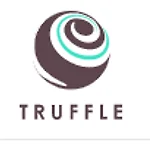목록2018/04 (10)
오늘도 공부
https://github.com/bear2u/til/blob/master/blockchain/DAPP/%ED%81%AC%EB%A6%BD%ED%86%A0%ED%82%A4%ED%8B%B0%EC%86%8C%EC%8A%A4.md
 Geth를 이용한 dapp 개발 #1
Geth를 이용한 dapp 개발 #1
Geth 설치 및 로컬에 세팅 (윈도우 기준)로컬 테스트넷에서 Geth 를 가동하기 위해선 두가지를 준비해야함데이터 디렉터리 ( chaindata )Genesis.json 파일윈도우 기반에서 진행한다.윈도우로 GETH 설치를 진행하자. https://geth.ethereum.org/downloads/genesis.json 을 만들자.{ "coinbase" : "0x0000000000000000000000000000000000000001", "difficulty" : "0x20000", "extraData" : "", "gasLimit" : "0x8000000", "nonce" : "0x0000000000000042", "mixhash" : "0x000000000000000000000000000000000..
 영어회화 100일완성 도전 성공
영어회화 100일완성 도전 성공
안녕하세요. 수지(수아지아를 줄여서) 아빠입니다. 100일 매일 15분이상 책읽기 성공 후기 바로가기작년 11월 27일부터 시작된 영어회화 하루에 6문장씩 외우는 모임을 시작을 했었습니다. 그리고 일요일 ( 2018년 4월 15일 ) 에 100일 완성을 했습니다. 주말은 쉬고 평일만 했습니다. 대체로 외워서 손으로 작성하거나 삼성노트로 작성해서 여러명 같이 공부하는 카톡방에 인증하는 방식을 취했습니다.그 중 몇개를 정리한 사진입니다. 영어 회화 외우게 된 계기영어는 세계 공용어가 된 지 오래입니다. . 어느 나라를 가든 영어는 기본으로 해야 하는데 늘 영어에 대한 두려움을 가지고 살아야 했었습니다.. 몇십년 영어를 봐도 막상 외국인 앞에 서면 헬로우 하아유? 밖에 잘 안나오는 팩트도 한심했었습니다. 그래..
크립토 좀비 https://cryptozombies.io 프로그래머스https://programmers.co.kr/pages/blockchain 자바스크립트로 블록체인 코인 클론https://academy.nomadcoders.co/p/nomad-coin
Document Metadata• Creators: @ned; @theoretical• Developers: @theoretical; @vandeberg; @itwasntme; @zgredek; @pychol-mychol;@small.minion; @youkaicountry; @picokernel• Contributors:@sneak; @vandeberg; @valzav; @youkaicountry; @justinw;@goldibex; et al.• Sketch designs: @pkattera• Copyright (c) Steemit, Inc. 2017• GitHub: https://github.com/steemit/smt-whitepaper/blob/master/smt-manual/manual.md ..
 [Server 세팅] 우분투에 nginx, SSL 세팅 가이드
[Server 세팅] 우분투에 nginx, SSL 세팅 가이드
2018년 3월 9일자 확인됨우분투에 서버 설치하기시작하기전 기본 설정EC2 기본형 올리기 (프리티어급)express 노드 앱이 준비 되어 있다는 가정putty나 맥을 통해서 터미널로 접속이 가능해야함 (pem 파일 이미 등록된 상태)DB는 AWS RDS 이용합니다.파일 서버는 S3 이용합니다.방화벽 설정하기aws ec2는 콘솔에서 설정가능참고 링크 :https://www.digitalocean.com/community/tutorials/how-to-set-up-a-firewall-with-ufw-on-ubuntu-16-04ufw allow 80 Nginx 설치일반적으로 우분투에 설치시 최신버전을 설치를 안한다. 그래서 저장소 키를 가져와서 직접 최신걸로 업데이트를 할 수 있다.참고내용 :https://..
 [ch2] 선택정렬 (Selection Sort)
[ch2] 선택정렬 (Selection Sort)
배열과 연결된 리스트의 장단점2장에서는 주된 설명은 배열과 연결된 리스트에 대한 비교 설명이 있었다.배열은 검색이 빠른 반면 삽입이 느리다는 것연결된 리스트의 경우 삽입이 빠르지만 검색부분에선 배열보다 느리다는 장단점이 있다.선택정렬 (Selection Sort)2번째 알고리즘 문제이다.만약 주어진 배열이 있으면 그 배열을 정렬하고자 할 때 선택정렬을 사용할 수 있다.기본 흐름은 다음과 같다. (순차적 정렬시)배열에 가장 작은 값 검색가장 작은 값 위치 값 획득그 위치 값을 배열에서 제거 하고 새로운 배열에 하나씩 추가함그렇게 해서 최종 새로운 배열로 결과값을 보여줌Python3 으로 구현시 다음과 같다.def findSmallest(arr): smallest = arr[0] smallest_index ..
이진탐색 (Binary Search)시나리오1~1000개 숫자 의 배열에서 특정 숫자만 뽑아내고 싶을 경우 어떻게 해야 될까?리스트로 한개씩 넣어서 검색해서 운좋으면 빠른 시간안에 검색이 될 수 있으나 최악의 경우 1000번의 수행을 해야 한다.이진탐색 알고리즘을 통해서 전체의 반을 검색하고 다시 반을 검색하는 방법을 사용할 수 있다.예를 들어 100의 중간 50부터 시작되는 함수로 시작된다4번만에 답을 찾은 경우이다. 그럼 log2 16 = 4 이라고 표시한다.즉 로그는 거듭제곱의 반대말이다.지수표현이 잘 안됨..10^2^ = 100 -> log10100 = 210^3 = 100 -> log101000 = 32^3 = 8 -> log28 = 3 (결과값을 앞으로 보내면 된다.)2^4 = 16 -> lo..
 알고리즘 왕초보방 책 한권 떼기 온라인 스터디 방 안내
알고리즘 왕초보방 책 한권 떼기 온라인 스터디 방 안내
안녕하세요. 수지아빠입니다. 요즘 알고리즘이 아주 핫합니다. 하지만 오랜 시간 개발을 해도 알고리즘을 따로 공부하지 않으면 늘 부족함을 느끼기 마련입니다. 그리고 바쁜 직장인 일정에서 스터디도 하긴 시간도 부족하고 늘어지기 쉽죠. 그래서 읽기 편한 알고리즘 왕초보 책 한권 우선 선정해서 다 같이 떼는 걸로 진행하는 온라인 스터디를 시작할 예정입니다. 인증도 같이 해야 되니 꼭 공부하실 분만 오세요. 인증방법은 챕터별 또는 공부한 내용에 대해서 GitHub 또는 자신의 블로그에 정리해서 올리시고 그 링크를 공유를 해주셔야 합니다. 정리하는 내용은 공부한 내용이므로 자세하지 않으셔도 됩니다. 자세하고 잘 적으시면 그만큼 더 뿌듯하셔도 됩니다. 멋지십니다. !!다시 말하자면 이방은 아래 알고리즘 책 한권을 위..
 [DAPP] truffle을 활용한 Pet-Shop 튜터리얼 분석해보자.
[DAPP] truffle을 활용한 Pet-Shop 튜터리얼 분석해보자.
Truffle를 활용한 Pet-Shop 튜터리얼 분석광고 클릭시 많은 힘이 됩니다. Truffle 튜터리얼 중 펫샵을 활용해서 프론트 까지 적용해서 어떤식으로 웹에서 연동되는지 살펴보자.아래 주소에 있는 내용은 깔끔하게 정리되어 있다. 따라해보는 걸 추천한다. http://truffleframework.com/tutorials/pet-shop여기 글은 펫샵에 사용되는 소스를 분석해보자 한다. 이더리움 플랫폼 위 DAPP개발 프레임워크 중 하나인 truffle사용시 개발시 순서는 다음과 같다.개발환경을 설정한다.truffle box( 보일러 플레이트처럼 만들어준다.)를 이용해서 pet-shop 을 해제스마트 계약 소스를 (.sol) 작성한다.컴파일 및 배포를 한다.Ganeche 를 통해 테스팅을 한다.웹 ..

